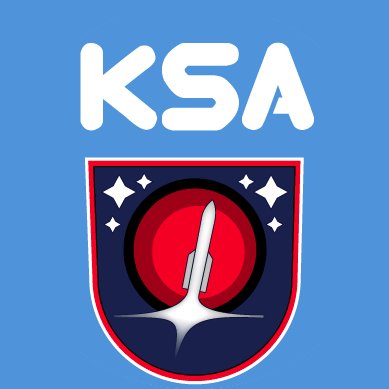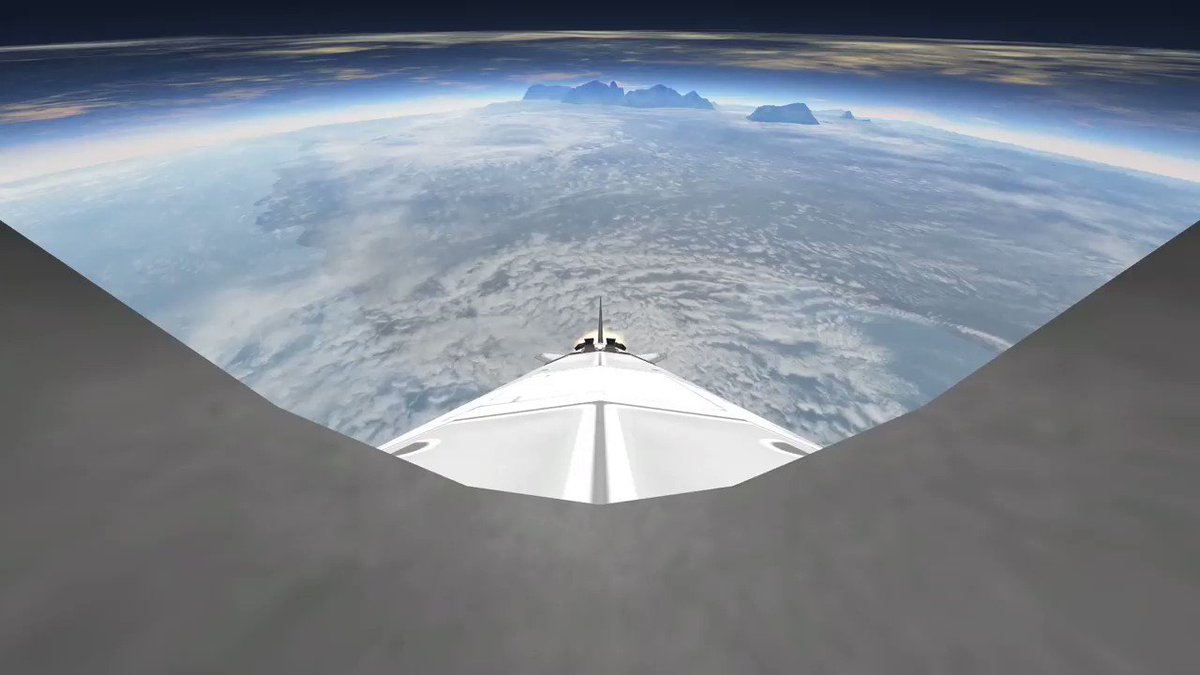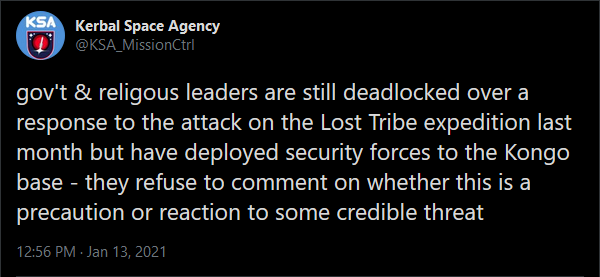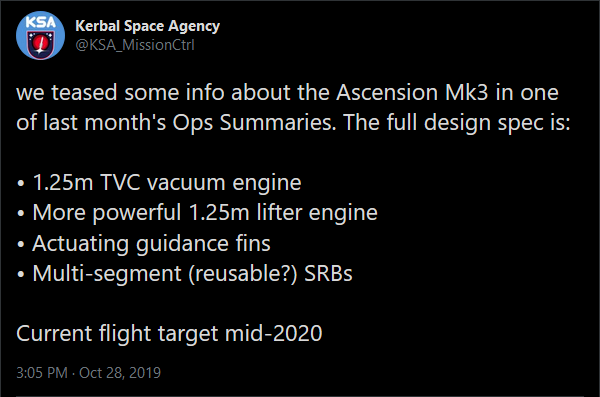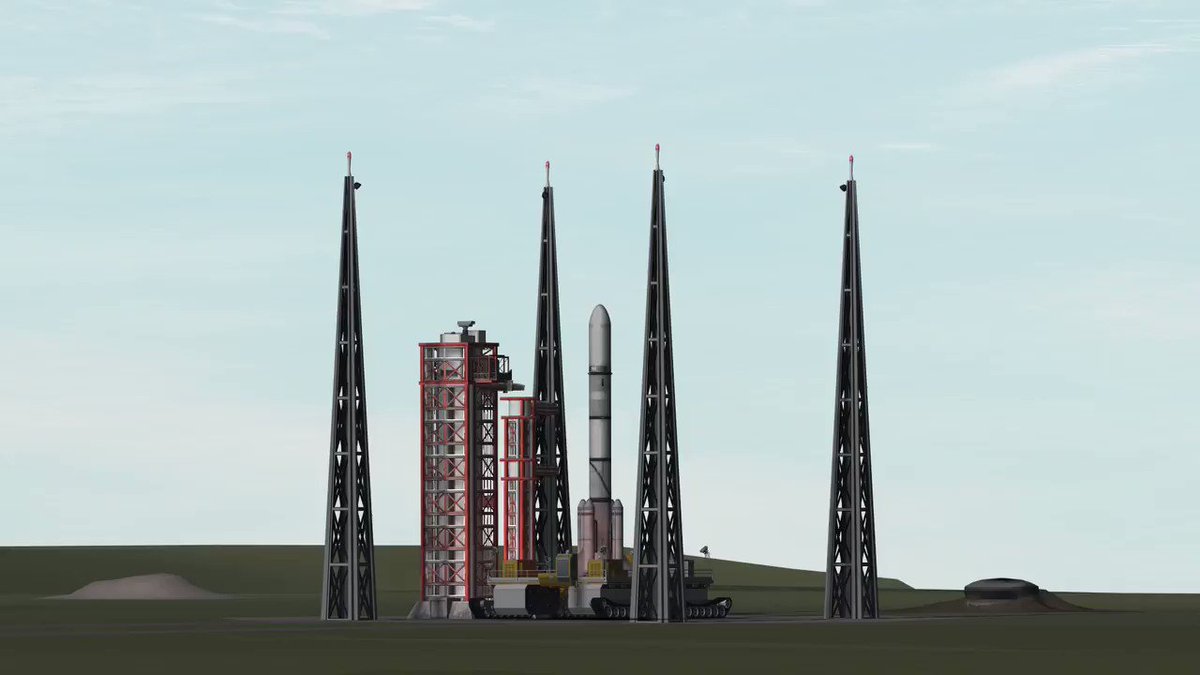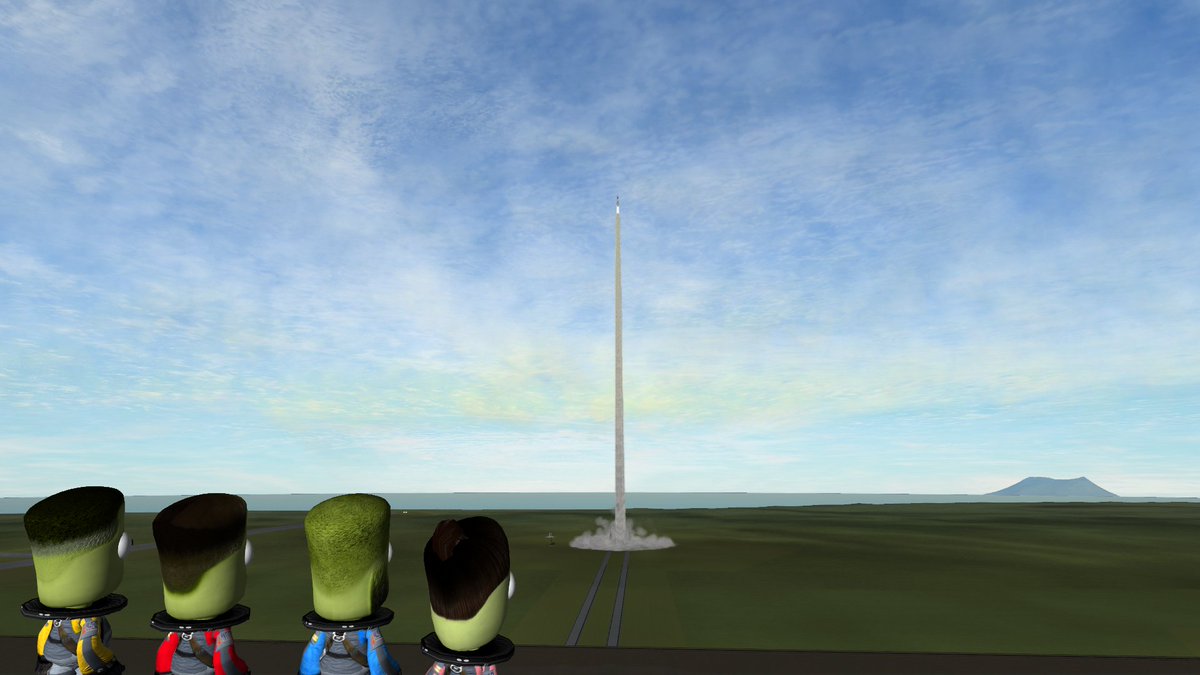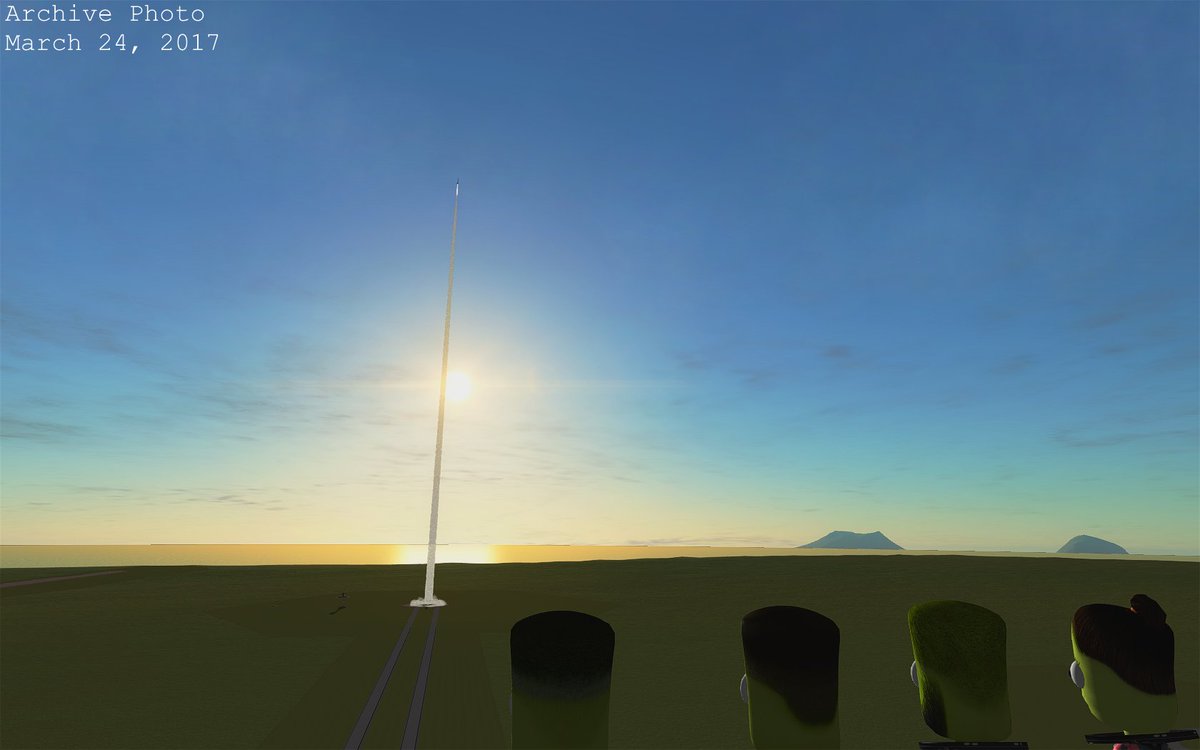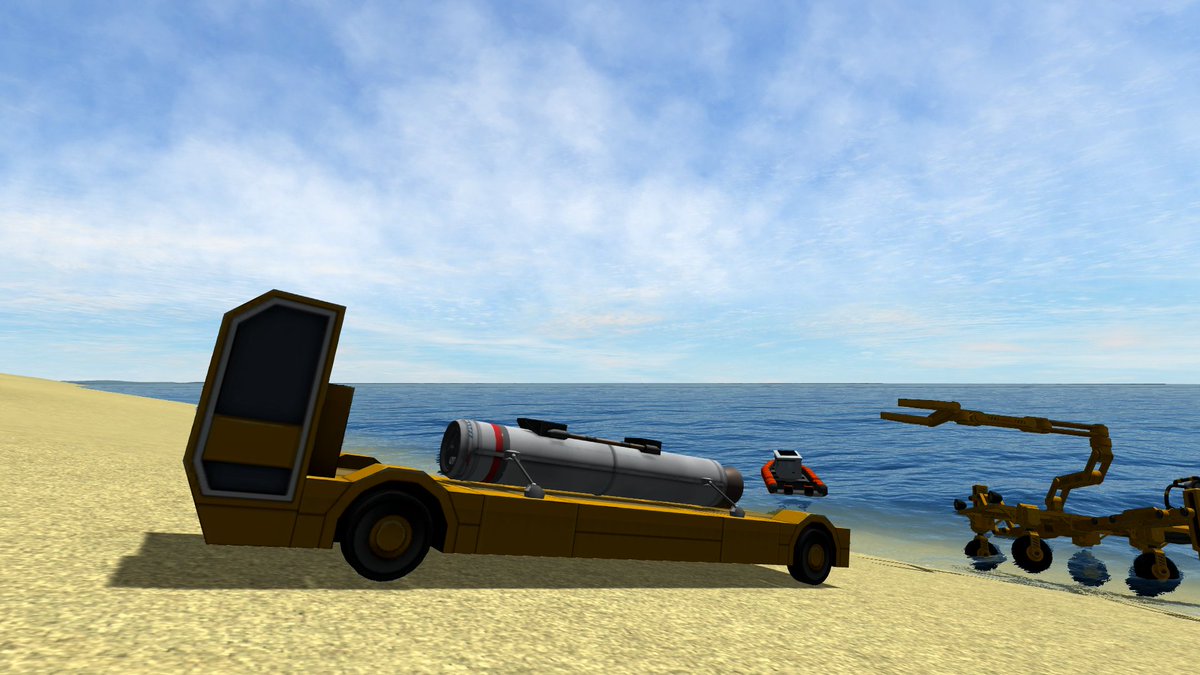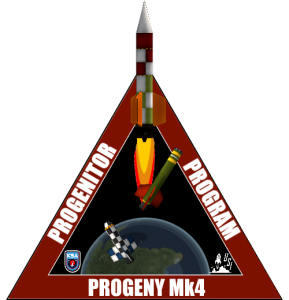 Over the past few days the Progenitor teams have gathered to discuss how to move forward with the Mk4 rocket after the ascent failure suffered towards the end of last week. A full analysis of the launch was carried out and these conclusions were then used to decide how the following series of launches should proceed. Operations Director Drew Kerman was called away for an emergency management meeting to our Umbarg HQ yesterday and finally today managed to call in to discuss these plans and give his approval.
Over the past few days the Progenitor teams have gathered to discuss how to move forward with the Mk4 rocket after the ascent failure suffered towards the end of last week. A full analysis of the launch was carried out and these conclusions were then used to decide how the following series of launches should proceed. Operations Director Drew Kerman was called away for an emergency management meeting to our Umbarg HQ yesterday and finally today managed to call in to discuss these plans and give his approval.
Launch Analysis
After the first launch destroyed the rocket through too much dynamic pressure on ascent, this launch aimed to test how the rocket performed while traveling as fast as it could through the upper atmosphere. To this end, the 3rd stage LF/O engine was fired at full thrust for the duration of its fuel supply, which equates to a burn of 30.6 seconds. The air in the upper atmosphere is thinner and thus generates less drag, which means the rocket can travel much faster. The lower volume of air also means thermal buildup is a serious concern due to the decrease of heat transfer – in other words although less friction is producing less heat, that heat is not dissipating as quickly so it builds up at an increasing rate. We believe this heat is what eventually led to the failure of the rocket, starting with the nose cone.
Let’s back up and walk through the entire launch sequence up to the point of failure. Note that we only have the telemetry data sent from the rocket to the Tracking Station at 1 second intervals. At L-0:00 the lower-stage XL booster ignited, producing an initial 131.26kN of thrust for a TWR of 7.64. It was decoupled after expending its 0.79t of solid propellant at L+0:05 after accelerating the rocket to 382.9m/s with a MaxQ of around 80kPa. The spin-up of the rocket to ~120RPM was successful in maintaining stable flight with a pitch around 84.5°. At L+0:17, traveling at 232.6m/s, the pitch had decreased by 1.5°, triggering controllers to ignite the second solid-fuel booster, producing an initial 43.8kN of thrust and accelerating the rocket to 428m/s with a MaxQ of around 50kPa. The booster was decoupled after flame out at L+0:21 and shortly thereafter the 3rd stage picked up a noticeable precession on its spin. The wobble of the nose was enough to make the pitch readings erratic and impossible to use to determine a change as small as 1.5°. Therefore controllers waited for the backup trigger, which was the rocket’s vertical speed falling below 100m/s, which it did at L+0:49 when the third stage was ignited at full throttle, producing an initial thrust of 11.7kN.
At L+1:15 a puff of smoke was seen coming off the rocket, which broke apart several seconds later at L+1:18. What most likely happened is the nose cone of the rocket, which would have seen some of the most extreme heating, failed and collapsed back against the main body – the puff of smoke would have been the packed parachute briefly erupting in flames when exposed. Whatever shape the nose cone collapsed into was no longer aerodynamically stable, causing the rocket, whose spin was already in noticeable precession, to fly too far off its prograde vector and break apart. It’s largely speculation as to how the rocket came apart because telemetry data downlink was lost at L+1:09. We suspect this was due to the extreme heat ionizing the air & interfering with radio communications, given that it happened well into the 3rd stage burn after heat had time to build up in front of the rocket where the antenna resides in the nose. The full video of the launch can be viewed below.
Although we lost telemetry data before the apokee of the rocket reached past 70km, the data we do have coupled with the radar plot of the rocket from the MSV Tongjess has allowed us to predict its trajectory onward past the point of failure. The result, we are happy to say, is an apokee that potentially extends to a height greater than 100km above the surface of Kerbin! Space starts at 70km so we are well past the mark and into low-Kerbin space. This is a great relief to Progenitor engineers, who were not looking forward to the extra complexity of strapping additional Mk1-B boosters to the bottom stage or adding an extra LF/O tank section.
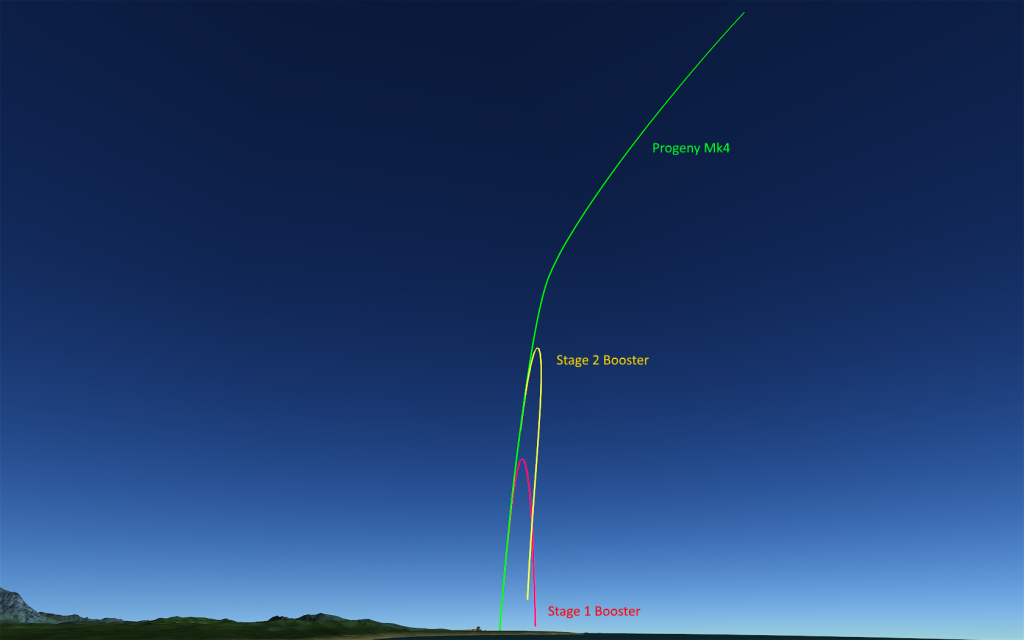 The plot above shows a side view of the Mk4 ascent trajectory along with its spent boosters. Note the large bend in the ascent due to controllers having to wait until the rocket fell to 100m/s of vertical speed. Note also the trajectory of the second stage. What happened here is that upon losing its fins after decoupling the booster itself was spinning so fast it remained pointing in the same direction even after reaching apokee and falling back towards the ground (consider a spinning top that doesn’t fall over). This means its engine was pointing towards the launchpad, and that’s the direction it fell in – you can see it almost perfectly matches the curve of ascent on its way down. The first stage booster behaved more normally thanks to the 0.625m-0.35m adapter changing its shape.
The plot above shows a side view of the Mk4 ascent trajectory along with its spent boosters. Note the large bend in the ascent due to controllers having to wait until the rocket fell to 100m/s of vertical speed. Note also the trajectory of the second stage. What happened here is that upon losing its fins after decoupling the booster itself was spinning so fast it remained pointing in the same direction even after reaching apokee and falling back towards the ground (consider a spinning top that doesn’t fall over). This means its engine was pointing towards the launchpad, and that’s the direction it fell in – you can see it almost perfectly matches the curve of ascent on its way down. The first stage booster behaved more normally thanks to the 0.625m-0.35m adapter changing its shape.
Future Launch Plans
We have ordered enough parts for five more Progeny Mk4s however we only plan to launch three before moving on to the Mk5 assuming all three launches go well and Umbra Space Industries is able to deliver the new Automated Master Control Unit (AMCU) to us on schedule. The defining feature of the Mk5 will be its ability to control itself throughout the launch and mission, in all other ways it is essentially a Mk4. Each of the three Mk4 launches will have different thrust settings for the solid-fuel boosters, starting with a takeoff TWR of 6, then 4 and then 2. The ultimate goal is to lower the ascent MaxQ to not exceed 40kPa in any boost stage. The lower TWR will give the lift at the nose a greater chance of flipping the rocket over early in the ascent before it can build up speed, but we feel the bottom stage is now wide enough while attached to keep drag below the center of lift. The LF/O engine will be lit initially at 50% thrust and throttled as needed to maintain velocity but not allow excess heating to occur.
The precession of the 3rd stage will be addressed by making the payload section of the rocket longer so the current fin placement is more effective. We can’t lower the fins any further on the third stage without coming into direct contact with the engine, most likely causing them to heat up and fail during ascent. We also need to add more battery power to last throughout the coast period after the third stage has cutoff to allow the onboard telemetry unit to gather data all the way through re-entry. Should the precession remain, third stage ignition will occur when the vertical speed has been reduced by half (in the case of this launch, that would have been at roughly 200m/s).
The 3rd stage fins will be shredded after engine cut-off and re-entry will occur with the third stage engine and fuel tank still attached to the payload. As the rocket falls through the atmosphere, it will naturally point engine-first, so the brunt of the re-entry heating is taken up by the most heat-resistant part of the rocket. Furthermore, the empty fuel tanks will be buoyant enough to keep the rocket afloat after it splashes down in the waters east of KSC. How far east is a good question. We plan to initially use two Maritime Service Vessels. One will be close enough to KSC to track the launch and ascent via radar and also ensure no encroaching vessels present themselves as a danger to spent boosters/debris. The second will be much farther downrange in order to get to the payload as quickly as possible. We assume it will stay afloat for some time but any unforeseen damage to the rocket that could let it take on water could reduce this time drastically.
Finally, some non-critical issues with the FCS (Fuel Control System) popped up during pre-flight on this last launch, and engineers will be focused on improving the fuel system valves to prevent this from occurring in the future.
Because USI has been waiting on the results of these two launches to determine if its LF/O engine design was final, there are no new parts waiting for us to use and have to finish being manufactured. We will get the rest of the rocket parts by mid-June in order to start adjusting the booster thrust and putting together the main stack so that by the time the first LF/O engine arrives near the end of the month it will be the only main component left to integrate. We hope to launch our next Mk4 in the beginning of July.








